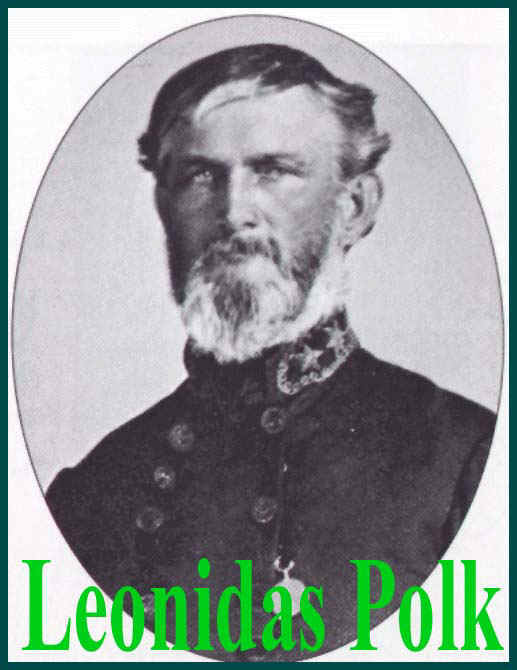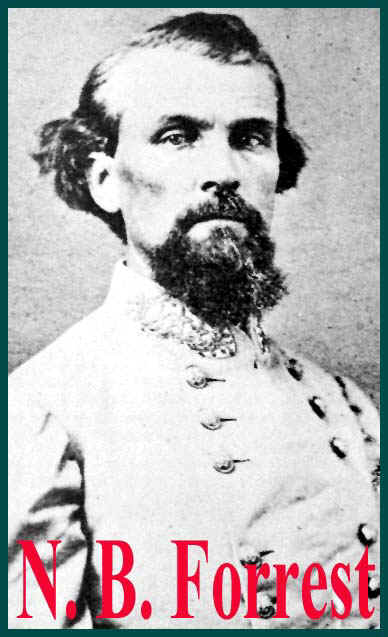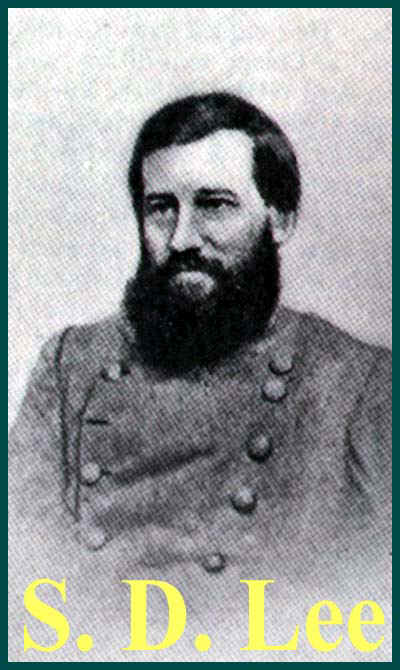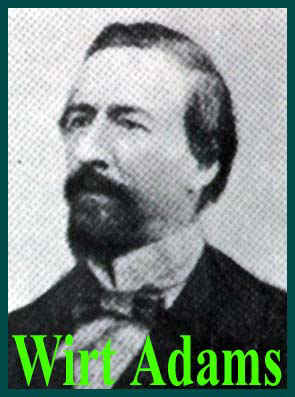|
|
|
 called
the 38th Mississippi Mounted Infantry, or the 38th Mississippi Cavalry,
and remained a cavalry unit until the end of the war. Polk also had the
14th Confederate Regiment, and the 3rd Mississippi Cavalry consolidated
with them. The War between the States saw the first use of dismounted cavalry.
What this means is that a regiment travels from battle to battle by horse,
but just before they reach the front they dismount, every 4th man stays with
the horses, and the rest
of the unit marches forward to fight. This type of tactic is still used today by
what is known as "mechanized infantry". Several reenactors state that
there were no "dismounted cavalry", but after one does a little
research you find otherwise.
called
the 38th Mississippi Mounted Infantry, or the 38th Mississippi Cavalry,
and remained a cavalry unit until the end of the war. Polk also had the
14th Confederate Regiment, and the 3rd Mississippi Cavalry consolidated
with them. The War between the States saw the first use of dismounted cavalry.
What this means is that a regiment travels from battle to battle by horse,
but just before they reach the front they dismount, every 4th man stays with
the horses, and the rest
of the unit marches forward to fight. This type of tactic is still used today by
what is known as "mechanized infantry". Several reenactors state that
there were no "dismounted cavalry", but after one does a little
research you find otherwise.
By August of 1864 several Companies of the 38th
participated in a battle called "A. J. Smith's 2nd Mississippi Invasion."
The 38th along with the 4th, 6th and 14th Confederate Cavalry formed the
brigade of Colonel Mabry in the Tupelo
campaign of July 1864. The regiment moved from Saltillo, July
9th to Ellostown, Major R. C. McCay commanding, but was held in reserve
during the skirmishing near Pontotoc on the 12th. On the 13th they took
part in the fighting with the Yankee rear guard as General A. J. Smith's
command moved toward Tupelo. The fighting continued until 2 am on the morning
of the 14th. When Smith's command reached Harrisburg by forced march he
turned his men around and set up a  strong
battle line on a ridge across a road. Lieut-General S. D. Lee, and Major
General Nathan B. Forrest ordered the troops to assault the Union line,
in which Mabry's Brigade was distinguished on then left flank. The 38th
played a major roll in the attack
strong
battle line on a ridge across a road. Lieut-General S. D. Lee, and Major
General Nathan B. Forrest ordered the troops to assault the Union line,
in which Mabry's Brigade was distinguished on then left flank. The 38th
played a major roll in the attack  which
took place under heavy fire from artillery, and small arms. All the regimental
officers of the brigade were killed or wounded. The 38th suffered the heaviest
losses of the entire brigade.
which
took place under heavy fire from artillery, and small arms. All the regimental
officers of the brigade were killed or wounded. The 38th suffered the heaviest
losses of the entire brigade.
In the battle of Harrisburg, July 14th, 1864, Major
R. C. McCay, commanding the regiment was killed, and Adjutant W. L. Ware
mortally wounded. Company A - Capt. J. S. Hoskins commanding: Hoskins lost
a leg, Corporal James Aldridge killed, 6 wounded, Company B - Capt. W.
L. Faulk commanding: 3 killed, 3 wounded including the Captain. Company
D - Capt. J. H. Jones commanding: 2 killed, 11 wounded, including the Captain,
2 missing. Company E - Capt. J. J. Green commanding: 5 wounded, including
Sergt. J. M. Dillard, mortally. Company G - Lieut. T. J. Wade commanding:
5 killed, including Wade, 2 wounded. Company H - Lieut. William Ball commanding:
4 killed, 6 wounded, including Ball.  Company
K - Capt. J. C. Williams commanding: 2 killed, including Lieut. W. Ball;
7 wounded, including the Captain. Total killed and mortally wounded 20,
wounded 51, missing 3.
Company
K - Capt. J. C. Williams commanding: 2 killed, including Lieut. W. Ball;
7 wounded, including the Captain. Total killed and mortally wounded 20,
wounded 51, missing 3.
The regiment took part in a few small skirmishes
during the year, but did not participate in any major battles until December
1, 1864 at Concord
Church Mississippi. The battle was between Mabry's brigade, under the
command of Colonel Griffith, and  Osband's
expedition, returning from an attempt to destroy the railroad bridge near
Canton. Griffith's command encountered Grierson's raiders moving to Vicksburg,
after destroying the Mobile & Ohio Railroad, at Franklin on January
2, 1865, where General Adams had a loss of 7 killed, 15 wounded.
Osband's
expedition, returning from an attempt to destroy the railroad bridge near
Canton. Griffith's command encountered Grierson's raiders moving to Vicksburg,
after destroying the Mobile & Ohio Railroad, at Franklin on January
2, 1865, where General Adams had a loss of 7 killed, 15 wounded.
Mabry's Brigade was broken up by order of General
Chalmers on February 18, 1865, and the 38th commanded by Colonel Brent
was assigned to General Wirt Adams's Brigade at Jackson. In the last campaign
in Alabama, during Wilson's Raid, the regiment was engaged at Sipsey bridge.
At the time of the capitulation by General Richard Taylor. commanding the
Department of Alabama, Mississippi, and East Louisiana, the 38th regiment
was at Brewersville, Ala. On, or about May 4, 1865 the regiment surrendered.
A list of the officers and men can be found on the roster
section of this web page.
Some of the sources used for this
history:
Military History of Mississippi
1803 - 1898, Dunbar Rowland --- Compendium of Confederate Armies: Mississippi,
Stewart Sifakis --- Official Records of the War of the Rebellion --- The
Final Fortress: The Campaign for Vicksburg 1862 - 1863, Samuel Carter III
--- The Photographic History of the Civil War ARMIES & LEADERS, Robert
S. Lanier --- Mathew Brady's Illustrated History of the Civil War, Benson
J. Lossing --- Great Battles of the Civil War, John MacDonald --- Vicksburg,
Official National Park Handbook --- Echoes of Glory, Illustrated Atlas
of the Civil War, from Time Life Books.